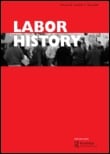The common image of a female wage earner in the U.S. in the decades around the turn of the 20th century is that of a young, single woman: the daughter of her family. However, the wives and mothers of these families also made important economic contributions to their families’ economies. This paper argues that we need to rethink our evaluation of the economic roles played by ever-married women in working-class families.
